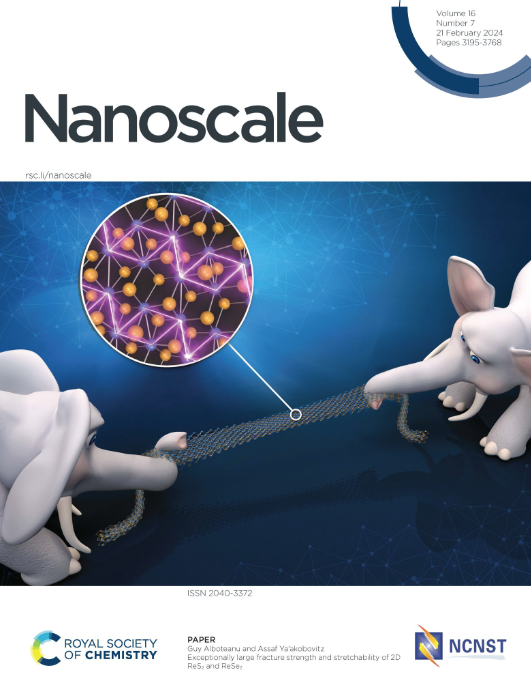Effectively Modulating Hydrophobicity and Surface Nanobubble Distribution on Graphene through Uniaxial Compressive Strain
IF 5.8
3区 材料科学
Q1 CHEMISTRY, MULTIDISCIPLINARY
引用次数: 0
Abstract
Graphene, owing to its intrinsically superhydrophobic nature, has been widely regarded as an ideal material for constructing highly stable nanobubble interfaces. However, the regulation of its hydrophobicity has long been constrained by irreversible atomic-scale structural damage and the complexity of fabrication processes. To address this challenge, we propose an innovative in-plane strain-driven strategy to modulate the hydrophobicity of graphene. Through molecular dynamics simulations, we systematically unveil the atomic-scale mechanisms governing the evolution of graphene's hydrophobicity under uniaxial compression. The study shows that uniaxial strain significantly enhances the polarization response of the graphene surface, thereby inducing a transition in its wettability from hydrophobic to hydrophilic. Based on these results, we further design a substrate structure with alternating hydrophobic and hydrophilic regions, allowing for precise control over the spatial distribution of surface gas-phase structures. Although current experimental techniques remain limited in applying such high levels of in-plane strain to monolayer graphene, this study aims to provide theoretical support and methodological insight for structural design in multiphase interface modulation as experimental capabilities continue to advance.通过单轴压缩应变有效调节石墨烯的疏水性和表面纳米气泡分布
石墨烯由于其固有的超疏水性,被广泛认为是构建高稳定纳米气泡界面的理想材料。然而,其疏水性的调控一直受到不可逆的原子尺度结构损伤和制造工艺的复杂性的限制。为了解决这一挑战,我们提出了一种创新的平面内应变驱动策略来调节石墨烯的疏水性。通过分子动力学模拟,我们系统地揭示了单轴压缩下石墨烯疏水性演变的原子尺度机制。研究表明,单轴应变显著增强了石墨烯表面的极化响应,从而诱导其润湿性由疏水性向亲水性转变。基于这些结果,我们进一步设计了具有疏水和亲水交替区域的衬底结构,从而可以精确控制表面气相结构的空间分布。尽管目前的实验技术在将如此高水平的平面内应变应用于单层石墨烯方面仍然有限,但随着实验能力的不断提高,本研究旨在为多相界面调制的结构设计提供理论支持和方法见解。
本文章由计算机程序翻译,如有差异,请以英文原文为准。
求助全文
约1分钟内获得全文
求助全文
来源期刊

Nanoscale
CHEMISTRY, MULTIDISCIPLINARY-NANOSCIENCE & NANOTECHNOLOGY
CiteScore
12.10
自引率
3.00%
发文量
1628
审稿时长
1.6 months
期刊介绍:
Nanoscale is a high-impact international journal, publishing high-quality research across nanoscience and nanotechnology. Nanoscale publishes a full mix of research articles on experimental and theoretical work, including reviews, communications, and full papers.Highly interdisciplinary, this journal appeals to scientists, researchers and professionals interested in nanoscience and nanotechnology, quantum materials and quantum technology, including the areas of physics, chemistry, biology, medicine, materials, energy/environment, information technology, detection science, healthcare and drug discovery, and electronics.
 求助内容:
求助内容: 应助结果提醒方式:
应助结果提醒方式:


